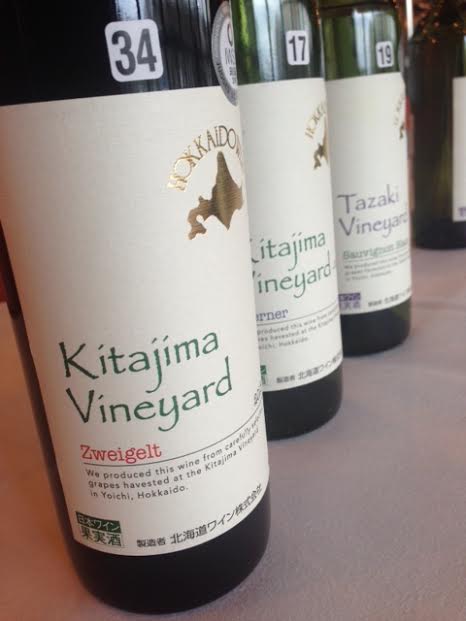An opportunity recently popped up to taste Wines from Japan in the Riverstation Restaurant in Bristol!
The wine world has always appeared to get smaller so this opportunity to be a guest at a Masterclass plus the tasting was just the reason to absorb these wines from afar.
This unique Wine Tasting Event was curated by the excellent Sarah Abbot MW and her team @groupswirl plus sponsorship from JFOODO (The Japanese Food Product Overseas Promotion Centre) the new government body that specialises in supporting agriculture, forest, fish and food products.
The Masterclass was hosted by Sarah Abbot MW who described the myriad of climes, rainfall and sunshine hours experienced at the diverse sites growing grapes.
Many of the white wines from Japan are made with their (now) indigenous grape Koshu that elaborates a plethora of styles in most of the Prefectures under vine.
Its origins are thought to be from the European grape genus, Vitis Vinifera (probably from Eastern Europe) plus a natural-occurring marriage to an Asian varietal on its journey to Japan via the Silk Road. In other words it is now considered a hybrid grape unique to Japan.
It is planted in many Japanese Prefectures able to create a plethora of styles from Sparkling to Dessert.
Modern Winemaking in Japan is from the last 100 years (although wine has been made in Japan for around 1000 years) but it’s the last 10 years or so have seen a healthy improvement as Japan and its unique food culture have born an inquisitive attitude to matching Koshu to Japanese food.
So this brief history of this mysterious grape needs to be put to the test by tasting what’s on offer starting with.
Lumiere Sparkling Koshu 2016 – Yamanashi – Traditional Method – Foamy confected notes, v gentle fizz. Although this has a dry finish it also has this rich fruit note.
Katsunuma Jozo 2017 Arugabranca Clareza Koshu 2017 – Yamanashi – Clean stone fruit nose, a strange ‘sour cherry’ note that became a touch saline.
MGV’s Winery 2016 K212 Ichinomiyacho White Koshu – Yamanashi – With a richer fruit nose and obvious barrel aging this is a modern adaption of Koshu.
Lumiere 2017 – Lumiere Prestige Orange (wine) Kohsu – Yamanashi – Saline (again) with a citrus-fruited textured wine. Good weight and mouthfeel. A Fino Sherry note is hinted in the body of the wine.
Other white grapes are also featured from different vineyards often in different Prefectures.
Hokkaido 2017 Tazaki Vineyard Sauvignon Blanc
Hokkaido – Classy Sauvignon nose, more Touraine than Marlborough! Acid-based yet zippy with a citrus Tang to the finish.
Hokkaido 2016 – Kitajima Vineyard No 7 Kerner – Hokkaido – A real surprise! Aged stone fruit nose with a small amount of confection – A defined late-harvest Germanic style and much finer than expected.
A few reds too…one being the Japan created Muscat Bailey A – a foxy sweetish grape that has been around since the early 20th Century.
It is still popular although the more western style reds are beginning to appear.
Shirayuri Winery L’Orient Muscat BaileyA 2017 – Yamanashi – Deep-scented ‘foxy’ fruit with an acid base. Dry finish I guess this would be best served chilled?
Hokkaido – Kitajima Vineyard Zweigelt 2015 – Hokkaido – An elegant plum-based red with some distinction. Lovely spiced notes to the finish. Again serve cool?
Fermier Cabernet Franc 2016 – Niigata – A supple red fruit nose and first taste. Mid-weighted wine with a classical leafy note finish.
Although western wines are creeping into the wine making repertoire and creating wines with delicate more than full-on flavours they along with Koshu are suitable to match the delicacies of Japanese dishes with ease.
At the time of writing (February 2019) selected Wines of Japan are available in the UK market (internet being the best way to search out) they will be a quirky addition to restaurant wine lists in the future or (better) do try with modern Japanese cuisine.
Stephen Barrett
@BistroWineMan for all social media

